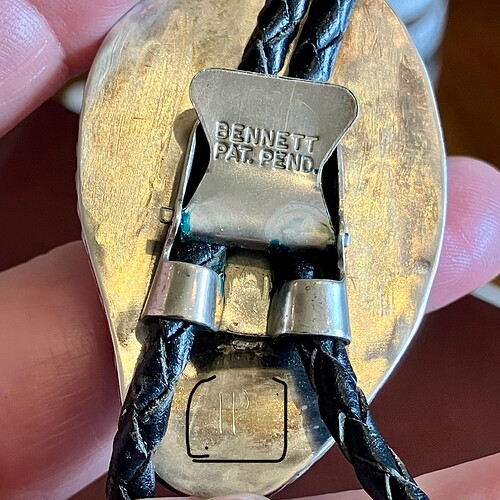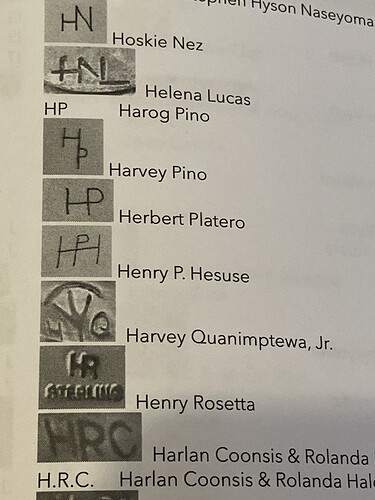Hey Y’all ![]() ,
,
I recently acquired these two pieces of turquoise jewelry; one is a bolo and the other is a buckle. Both pieces seem to have been made by the same person. My question is about the turquoise. I’ve read there are different varieties of Bisbee turquoise such as green, polychrome, in quartz, Smokey , Lavender Pit , etc.
I was wondering if this turquoise could be one variety of Bisbee turquoise. I appreciate any suggestions y’all may have and I thank you in advance ![]()
IMHO it doesn’t have that typical dark chocolatey red-brown matrix, really.
Could possibly be Persian, Morenci or Copper King. Or Bisbee LOL. Or our joker … wait for it … this must be Kingman.
Edit: also Blue Ridge looks similar.
@gt75 Lol ![]() thank you!
thank you!
First of all, there’s no way of knowing for sure without actual provenance from the maker / miner. Secondly, I don’t really think it looks like Bisbee; looks more like Kingman to me, which is the most prolific American mine. Somewhere I read that the Kingman mine produces more turquoise than all the other American mines combined, and it can mimic turquoise from almost any other mine. Also I believe the names you mentioned are all just descriptions of how Bisbee looks, not actual types. And Lavender Pit was the name of the pit where Bisbee was discovered inside the mine.
My guess is that it’s Kingman turquoise.
Are there any marks on the back of either of your pieces that might give us an idea of the artist? They do look like they may have been made by the same person.
@Islandmomma I posted images of the back and there is a signature stamp but the closest signature I could find was from Herbert Platero but I don’t think it was made by him
I looked through Hougart 4th edition for all variations – PP, HP, PH – but couldn’t find any matches.
@Islandmomma also I just noticed that the signature on the bolo is slightly different from the buckle
@chamekke Thank you , I appreciate you!
I have to say the HP on the bolo does look like Herbert Platero’s signature . The image was taken from Billie Hougart’s 5th edition book page 389 ; maybe, maybe not ![]()
Treated Kingman turquoise. Looks like experimental work by a novice hobby silversmith, and I’d be very surprised if it’s native made. Any resemblance to a known native hallmark is likely to be entirely coincidental.
@mmrogers Thank you Mr. Rogers, I value your opinion ![]()
![]()
@chamekke Thank you ![]()
Neither stamped or “etched” in this case, but crudely scratched in to the surface of the metal with a sharpened scribe. No self respecting silversmith or craftsperson marks a piece of jewelry like this. Have seen older pieces, presumably pre-dating sharpie markers, where dealers carelessly scratch in cost codes in this manner.
One needs to bear in mind as well that the level of fraud, fakery, and misdirection in the ‘Native American jewelry’ space is unparalleled in virtually any other area of commerce. Third parties marking pieces after the fact to enhance perceived value is a fairly common practice, especially for pieces that without attribution are worth no more than the cost of materials, as is the case here.
I have a ring that I bought as pawn years ago at Cameron TP that has a few letters scratched on it like you described. I tried for awhile to figure it out artist wise, and then went, duh, it’s prob a trader’s code.
This would be Morenci. Morenci will have the darker matrix and Bisbee has the silver matrix for the pyrite.
Respectfully disagree. Morenci AND Kingman both can have pyrite, although I don’t see pyrite in these pictures anyway. I have Kingman with darker matrix (although the matrix in this buckle’s stone isn’t overly dark). Bisbee is not particularly known for having pyrite, and not sure what exactly you mean by “silver matrix for the pyrite.” Morenci is less common than Kingman, so it’s more likely that this is stabilized Kingman.





